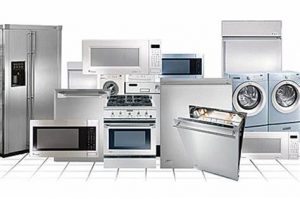Appliance and machinery collectors understand very well how knowledge about both antique and modern equipment could someday be of great value in the market. In the “white goods” sector, there’s a lot of curiosity going on. If you’re one of the people who don’t know much about these products, but you’re very much interested in knowing more about them, you’re right where you should be.
Below are some of the most surprising and mind-blowing facts about white goods SA that every appliance collector and homeowner should be aware of.
- What are White Goods?
White goods are large appliances and home machinery used mainly for home chores and maintenance tasks. These machinery can be used in commercial spaces, too, but most of them are found in residential areas.

- Do They Have to be White?
Many years ago, white goods SA shared a common feature: they all featured white finishes. This is the main reason why domestic machines received their label. However, in today’s time, it’s ironic that the name has not been changed even if developments in manufacturing allows for other colours in terms of finishes.
For instance, even if your dishwasher has a grey or black finish, it is still categorised under the white goods bracket. This is because back in the days, dishwashers were globally painted white. The same is true for freezers and other large home appliances.
- These Products Have Greater Use
Most appliances labelled as white goods are up for recycling after they get worn out or damaged through time. When you dump them in junk shops or rubbish dumps, they will be chopped up. All parts and elements that can still be used will be separated while parts that can no longer be remedied will be melted and reused for creating new machinery. How amazing is that?
- They Can be Valuable
If you have home appliances such as refrigerators or washing machines that stood the test of time and served several generations in your family tree, don’t dispose of these appliances right away. Many appliance collectors are willing to dish out whopping amounts for old machinery models.
Maintain your old appliances well and once you come across a buyer in search of ancient but still standing home machinery, negotiate well and who knows, you might be in for a huge Aussie surprise!
- Major White Goods
The list of white goods included water heaters, kitchen stoves, air conditioners, microwave ovens, dishwashers, refrigerators, trash compactors, drying cabinets, freezers, and clothes dryers originally. Smaller appliances such as food processors, electric kettles, and coffee makers were not included in the list.
Studying white goods and other machines is a fun and exciting approach towards introducing your children to manufacturing studies and the world of invention. If you think your child has a knack for appliances, tell them about white goods and how these pieces of machinery helped much in easing man’s burdens over the years.

